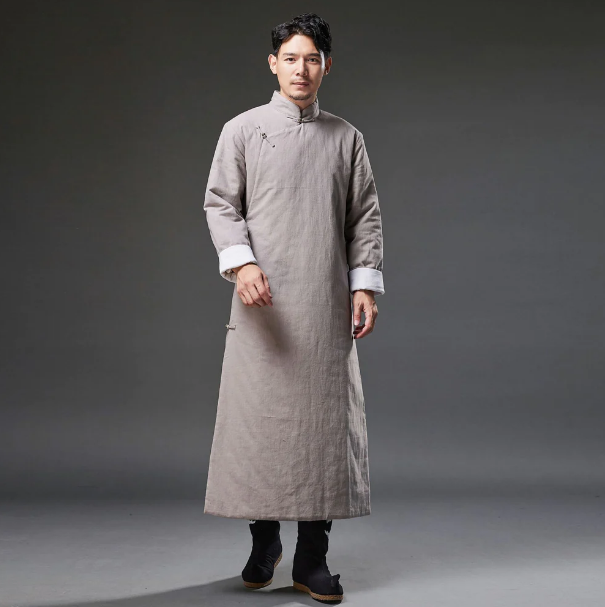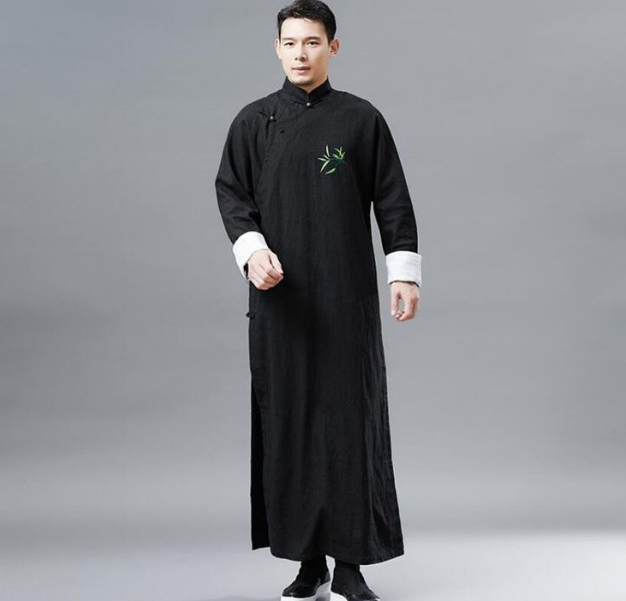Introduction to Traditional Chinese Attire
Exploring the realm of traditional Chinese clothing unveils a rich tapestry of history and cultural identity. Chinese attire, revered for its elegance and symbolic significance, encompasses a range of garments that have evolved over centuries. Each piece tells a story, reflecting the values and aesthetics of the times. The most iconic among these is the Qipao, known for its unique style and grace. But the spectrum of traditional attire extends beyond this well-known silhouette, offering a glimpse into China’s sartorial legacy.
The History of Qipao
The Qipao, also known as Cheongsam, emerged during the Qing Dynasty, evolving dramatically through the years. It began as a loose-fitting dress, gradually transforming into the form-fitting garment we recognize today. This evolution mirrors societal changes, particularly the shift in women’s roles and status. The Qipao, with its distinct high collar, slits, and embroidered patterns, not only serves as a cultural icon but also symbolizes the fusion of traditional and modern fashion sensibilities.

Gender Variations in Chinese Traditional Dress
While the Qipao is predominantly a female garment, traditional Chinese attire for men holds equal historical significance. The male counterpart, often overshadowed, is rich in variety and history. These garments, varying in style from the Hanfu to the Changshan, represent different eras and social statuses. They are characterized by their use of fabrics, colors, and intricate designs, each carrying symbolic weight. Understanding these variations offers a more holistic view of Chinese cultural attire, showcasing the diversity and richness of traditional Chinese fashion.
The Male Version of Qipao: Changshan
Delving into the world of traditional Chinese menswear, the Changshan stands out as the male counterpart to the famed Qipao. This traditional long gown, steeped in history, has adorned men across various strata of Chinese society. It features a straight-cut, simple design, often made of silk or cotton. The Changshan, like the Qipao, serves not just as clothing but as a cultural emblem, representing a blend of tradition and elegance in male fashion.
Historical Background of Changshan
Originating in the Qing Dynasty, the Changshan, or “long shirt,” was a staple among Chinese men. Initially inspired by the Manchu attire, it quickly gained popularity across the country. Throughout the 20th century, this garment symbolized cultural identity, especially during periods of social change. It has been a witness to history, evolving in style to meet the needs and tastes of different eras. The Changshan’s journey mirrors the social and political transformations within China, making it an essential piece of the country’s sartorial heritage.
Design and Aesthetics Compared to Qipao
While sharing a common ancestry with the Qipao, the Changshan boasts distinct features in its design and aesthetics. Unlike the form-fitting Qipao, the Changshan offers a looser fit, ensuring comfort and ease of movement. It typically features a mandarin collar and front buttons, often running diagonally from the neck to the underarm. The elegance of the Changshan lies in its simplicity and understated style, contrasting with the often more ornate and figure-hugging Qipao. This difference in design reflects the diverse expressions of beauty and grace in Chinese traditional attire.
Cultural Significance of Changshan
The Changshan, more than just a garment, encapsulates a rich cultural heritage within its threads. It represents a deep connection to Chinese history and traditions, holding a special place in the hearts of many. This attire, often worn during important festivals and ceremonies, symbolizes respect for tradition and cultural pride.
https://www.youtube.com/watch?v=QP6cA-ZEYd0&pp=ygUiV2hhdCBpcyB0aGUgbWFsZSB2ZXJzaW9uIG9mIFFpcGFvPw%3D%3D
Symbolism in Chinese Culture
Every aspect of the Changshan, from its design to its colors, carries symbolic meaning. For instance, the color red, often used in Changshan, symbolizes good fortune and joy, while blue represents immortality and harmony. The dragon, a common motif in Changshan embroidery, denotes power and nobility. These symbols reflect the deep-rooted values and beliefs of Chinese culture, illustrating the society’s connection to its rich past.
Modern Usage and Representation
In contemporary times, the Changshan has found new life in various forms. While its traditional use persists in ceremonies and cultural events, modern designers have reimagined it for everyday fashion. Celebrities and fashion icons often don the Changshan at global events, showcasing its timeless appeal. This modern representation bridges the gap between tradition and contemporary style, keeping the essence of Chinese culture alive in a rapidly changing world.
Fabric and Patterns in Men’s Traditional Attire
In the realm of traditional Chinese men’s attire, fabric and patterns play pivotal roles, conveying elegance and cultural significance. These elements not only define the garment’s aesthetics but also its place in the social and cultural fabric of China.
Common Fabrics Used in Changshan
Silk, known for its luxurious sheen and smooth texture, stands as the most preferred fabric for Changshan. Its breathability and versatility make it suitable for various occasions. Cotton, valued for its comfort and durability, is another popular choice, especially for everyday wear. In colder regions, woolen Changshan provide warmth while maintaining traditional elegance. These fabrics, carefully chosen, ensure that the Changshan remains both a cultural emblem and a practical garment.
Symbolic Meanings of Patterns and Colors
Patterns and colors in Changshan are not mere design choices; they carry deep symbolic meanings. Red, a dominant color, represents luck and joy, making it a favored choice for festive occasions. Black symbolizes stability and sophistication, often worn in formal settings. Dragons, phoenixes, and other mythical creatures frequently adorn Changshan, each signifying different virtues like power, wisdom, and good fortune. These symbols woven into the fabric of Changshan represent a rich tapestry of beliefs and values intrinsic to Chinese culture.
Evolution of Changshan in Fashion
The Changshan, a timeless piece in Chinese menswear, has undergone significant transformations, reflecting the dynamism of Chinese fashion. This evolution is not just a tale of changing styles but also a narrative of cultural and social shifts.

Changes Through the Dynasties
From its roots in the Qing Dynasty, the Changshan has evolved, adapting to the changing tides of time. Initially, it reflected the Manchu style, characterized by straight lines and a simple design. As dynasties changed, so did the Changshan, incorporating influences from Western fashion, particularly during the Republic era. This era saw the Changshan becoming more tailored and form-fitting, a departure from its traditional loose cut. These changes chronicle the story of China’s journey through the ages, with the Changshan at its sartorial heart.
Influence on Contemporary Fashion
In modern fashion, the Changshan continues to inspire. Designers often blend traditional elements with contemporary styles, creating garments that appeal to a global audience. The Changshan’s influence extends beyond China, seen in collections on international runways and in the wardrobes of fashion-forward individuals worldwide. This blend of old and new underscores the Changshan’s enduring appeal, making it a symbol of cultural pride and a source of inspiration in the global fashion landscape.
Changshan in Modern Day
The Changshan, steeped in tradition, has successfully transcended time, remaining a relevant and cherished garment in contemporary society.
Adaptations for Contemporary Wear
In the modern era, the Changshan has undergone subtle yet impactful adaptations to cater to the demands of contemporary fashion. Tailoring techniques have evolved to create slimmer and more form-fitting versions of the garment, enhancing its appeal to a younger generation. Innovations in materials have also made it more comfortable for everyday wear, allowing individuals to seamlessly incorporate the Changshan into their wardrobes. These adaptations strike a balance between preserving tradition and embracing modernity.
Changshan in Popular Media and Global Fashion
The Changshan has not only retained its popularity within China but has also made its mark on the global fashion scene. It is frequently seen in popular media, worn by actors in movies and TV shows, showcasing its timeless elegance. Additionally, international designers have drawn inspiration from the Changshan, incorporating its elements into their collections. The global recognition of this traditional Chinese attire underscores its enduring influence and adaptability.







